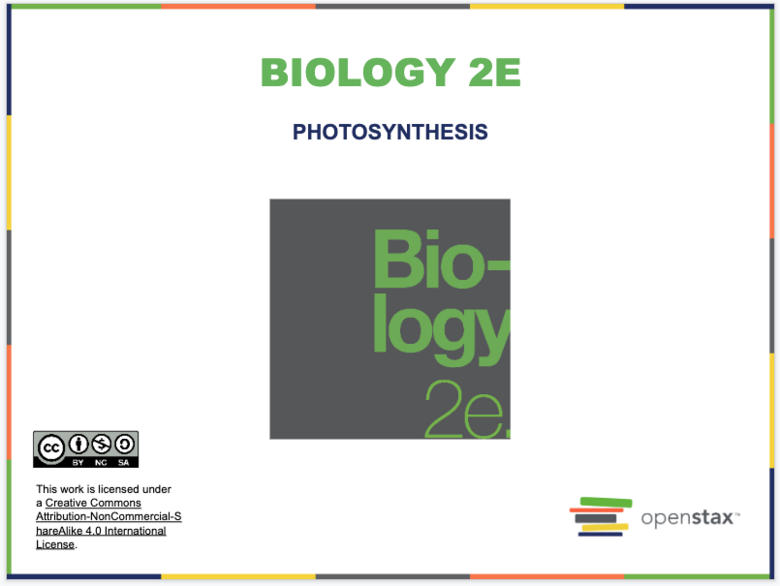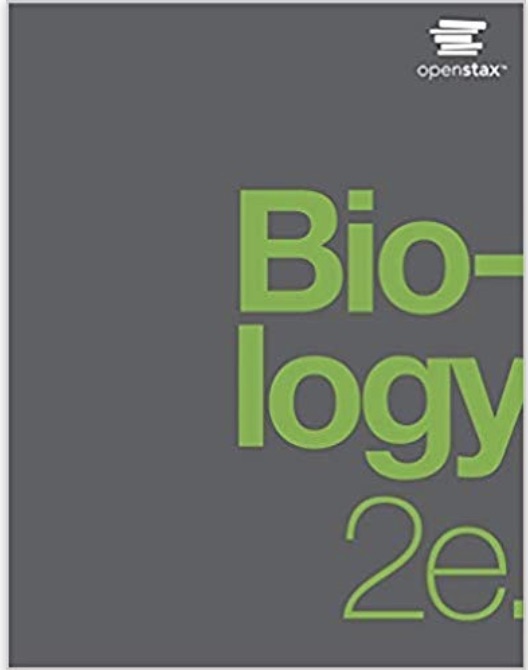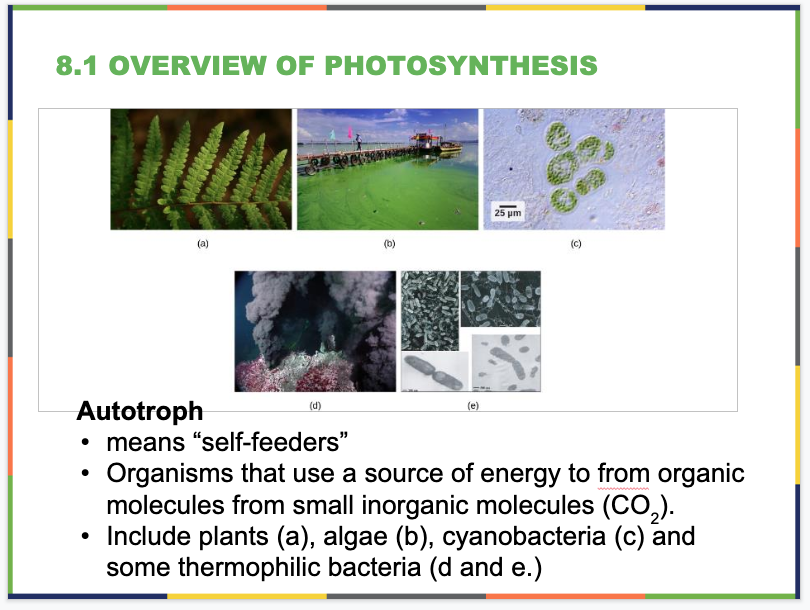Photosynthesis Introduction Resources

Overview
Virtually all life on Earth depends on Photosynthesis. Photosynthesis uses energy in sunlight to form organic molecules such as glucose. This transformation of light energy to chemical energy provides fuel for the metabolic processes in all organisms. Photosynthesis also produces oxygen required for aerobic cellular respiration. This chapter covers light energy as part of the electromagnetic spectrum, basic structures involved in photosynthesis and the metabolic pathways of photosynthesis divided into the light-dependent reactions and the Calvin cycle.
Learning Objectives
- Summarize the overall organization of the chemical pathways involved in photosynthesis and how these pathways accomplish the conversion of light energy into chemical bond energy.
- Describe the process of energy transfer from its source (the sun) through biological systems.
- Explain how energy moves through an ecosystem.
- Describe the relationship between life forms and their environment and ecosystems.)
- Describe the principles of energy transformations through membrane embedded electron transport chains.
- Describe the enzymatic basis of the mechanisms that living organisms use to harvest energy.
Recommended Textbook Resources
OpenStax: Biology 2e
Chapter 8, Photosynthesis. In plants, photosynthesis occurs in chloroplasts where pigment molecules absorb energy from wavelengths of light in the visible spectrum. The light-dependent reactions form ATP and the reduced electron carrier NADPH that are used in the Calvin cycle to produce organic molecules.
Student Assessment Activities
Project 1:
Carbon dioxide enters the leaves through stomata and is accompanied by water loss. Plants must balance obtaining adequate carbon dioxide for the Calvin Cycle with maintaining water content in tissues. Most plants conduct C3 photosynthesis where a three-carbon compound (3- phosphoglycerate) is the first stable product of carbon fixation.
- Investigate how C4 and CAM plants are able to use spatial and temporal separation of carbon dioxide intake from the reactions of the Calvin Cycle to conserve water and optimize efficiency of carbon fixation.
- How might increasing concentrations of carbon dioxide in the atmosphere impact photosynthesis? Would the impact differ for C3, C4 and CAM plants?
Khan Academy: C3, C4, & CAM Plants
Project 2:
Draw a diagram of a chloroplast. Label the inner membrane, outer membrane, a thylakoid disk, granum, and the stroma. Identify the location of the light-dependent reactions and the Calvin cycle. Consider the following:
- If the pH of the stroma were decreased, what might be the most immediate impact on photosynthesis? Explain your answer.
- Compare ATP production through oxidative phosphorylation in Aerobic Cellular Respiration to photosynthesis. What region of the mitochondria would be analogous the lumen of the thylakoids. Explain your answer.
- How does the structure of a chlorophyll (a or b) molecule facilitate its positioning in the thylakoid membrane? Be sure to include an explanation of hydrophobic/ hydrophilic properties and membrane structure in your answer.
Project 3:
Ribulose 1,5-bisphosphate carboxylase/oxygenase (RuBisCO) is an enzyme that catalyzes the reaction between carbon dioxide and ribulose bisphosphate in the Calvin cycle. This reaction is the carboxylase function. RuBisCo also has oxygenase activity or the ability to bind oxygen (O2). This reaction is part of a process called photorespiration. Investigate photorespiration and answer the questions.
- How does photorespiration result is plants releasing carbon dioxides?
- Why is this typically considered a wasteful process for plants?
- How might this process have a beneficial function in plants?

